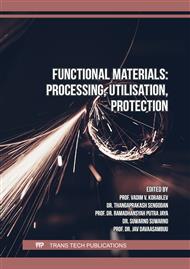p.65
p.71
p.79
p.85
p.91
p.97
p.111
p.117
p.127
Physical Modeling of Steel Resistance to Hydrogen Embrittlement
Abstract:
Hydrogen can be used in the same energy processes as natural gas and become a tool for implementing the transition to a sustainable low-carbon economy. The level of contamination resulting from controlled combustion of hydrogen or methane-hydrogen mixture is relatively low, which will significantly reduce CO2 emissions. However, the use of hydrogen can involve considerable difficulties associated with the hydrogen compatibility of materials. With the increase in the production, storage and transportation of hydrogen gas, including through gas pipelines, hydrogen-resistant materials are needed. The main problem with hydrogen is its embrittling effect. Under the influence of hydrogen, pipelines materials can probably have the following: hydrogen charging of the surface layer under pressure, loss of plasticity at tensile loads, formation of cracks and blisters (by decogesia mechanism), diffusion to the stress concentrator according to adsorption theory, accumulation of hydrogen at the top of the crack (which can lead to cracking) and so on. To assess the possibility of using a pipeline system for transportation of hydrogen gas in large volumes, it is necessary to know hydrogen compatibility of pipe steel. Physical modeling of steel resistance to hydrogen embrittlement can be carried out using electrochemical and gas charging methods.
Info:
Periodical:
Pages:
91-96
Citation:
Online since:
March 2023
Price:
Сopyright:
© 2023 Trans Tech Publications Ltd. All Rights Reserved
Share:
Citation:


